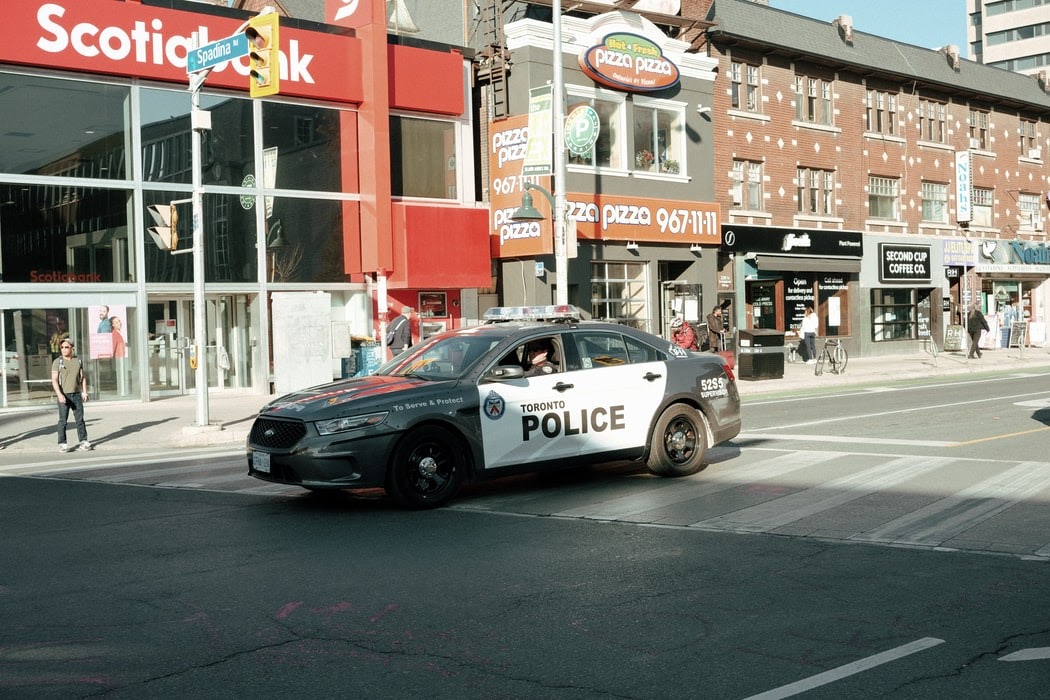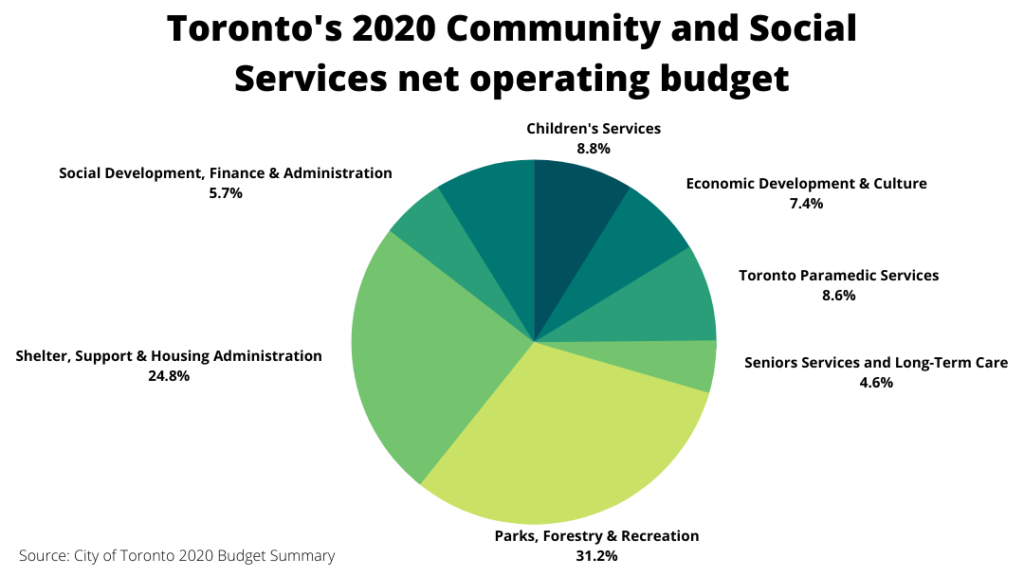
Toronto is on track to give its police force more money — something advocates who’ve pushed for that money to be diverted to community services say is a problem.
Out of the City of Toronto’s 2020 total budget of $13.5 billion, eight per cent went towards the Toronto Police Service, while less than 0.5 per cent went towards community development.
Community advocates for defunding the police aren’t happy about the government’s allocated funding and they demand a cut to the police budget.
However, the city’s 2021 budget projection proves that this is not likely, as it’s projected that police funding will increase by another 1.8 per cent.
Sidra Jafri is a fourth-year journalism student at Ryerson who lives just south of the Malvern neighbourhood in Scarborough — known for high crime rates. She said she believes that there should be more focus on community-led initiatives to tackle crime and poverty and less on policing.
“I feel like putting our funds into community-based programming and things that are actually more about rehabilitation than punishment, would be a lot better than putting money and funding into police, because that will just scare people in that community,” Jafri said.
Zahir Kolia, an assistant professor in criminology at Ryerson, said that low-income or ‘disinvested’ areas are the result of the allocation of government funds away from social and community causes and towards coercive institutions, such as policing. This may lead to more social issues within these communities such as crime and violence, which is what the police force is supposed to be there to prevent.
Kolia said that massive police budgets should instead be going towards social services that have been cut over the last few decades.
Last year, Toronto city council denied a motion proposing a 10 per cent cut to the city’s police service budget to be allocated to community services, according to an article by CTVNews.
“Regular people, you and I, have been burdened with paying for ‘social goods and/or rights’ that should be afforded to everyone equally,” Kolia said. “Hence, the racialized income inequality that exists and has been getting worse are some of the areas that need attention.”
He said that this is coupled with ‘broken-windows policing’, in which low-level crimes, such as jaywalking and graffiti, target those living in racialized and low-income communities. As a result this leads to higher crime rates.
According to the City of Toronto website, the city’s Community Investment Funding program “offers grants to help achieve social, economic and cultural goals for Toronto residents.” On the website it states that these grants, “support new and emerging groups, support sector resilience, and encourage resident engagement and leadership development.”
Some of these grants include the Community Crisis Response Fund, Youth Violence Prevention Grant, and Neighbourhood Grants, among others.
According to the City of Toronto’s 2020 budget, total funding for Social Development, Finance and Administration (SDFA) was approximately $59 million that year. The SDFA division “drives transformative change to achieve stronger, safer and more resilient communities and neighbourhoods in Toronto,” according to the budget notes.
This division is also in charge of Community and Neighbourhood Development, the Community Partnership Investment Program, Social Policy and Planning, Financial Management and Program Support, and Corporate Leadership. This division is part of the “Community and Social Services” area of Toronto’s budget, which, in total, has a budget of just under $1 billion in 2020. This means only about six per cent of the community and social services budget went towards SDFA.
Comparatively, the Toronto Police Service budget for 2020 was approximately $1.076 billion. According to an analysis by CTVNews, Toronto has the biggest municipal police force among all cities in Canada.

According to data released by the Toronto Police Service on their Public Safety Data Portal and Toronto’s neighbourhood profile data, neighbourhoods with higher crime rates have higher poverty rates and higher percentages of visible minorities living there.
Sawayz Sayed is a resident in the Glenfield-Jane Heights neighbourhood, which has high crime rates as well as high poverty rates. He said crime being more prevalent in lower-income neighbourhoods is not surprising.
“Having (less) money and living in poverty means that you have to strive to survive. So, some people will do whatever is necessary to get that money,” Sayed said.
He said that a lack of access to important resources in low-income neighbourhoods is a big factor in high crime rates and there needs to be more programs to assist people in getting a good education, having someone to talk to, and creating community involvement initiatives.
Even though crime is declining and Canada’s overall crime rate is relatively low, Kolia said there is still a long way to go to eradicate these social crises in disinvested areas. He said he believes that funding used for policing needs to be reduced and dispersed to other areas of importance.
“What we need is a paradigm shift towards placing more funding in education in areas that have been socially disinvested in,” Kolia said. “There needs to be more funding to lower teacher-to-student ratios, there needs to be more funding for affordable housing so folks can have a stable living situation and not be carrying the average debt load that Canadians have.”
Jafri said that community-based programs will encourage community members to come together, and that the overabundance of funding towards the police is only increasing negative feelings and behaviour in these neighbourhoods.
“After all the social justice movements, police are seen as more of a scary, bad thing rather than someone who is there to protect you, at least to me anyways,” said Jafri. “I’ve never liked the police personally, because there is a lot of profiling going on, and as a person of colour myself, I have definitely been looked at in a certain way by police sometimes. It’s very upsetting and it doesn’t make me feel safe in my own neighbourhood.”
Jafri said that defunding the police and instead allocating funds to community incentives will allow community members to feel safer and live happier lives.
